Keystone Species 101
From coastal tide pools and rolling prairies to African savanna and arctic terrain, the earth is home to myriad ecosystems, each one regulated by interlinking parts, including the creatures that call them home.

Tiger shark
iStock
In the 1960s, renowned ecologist Robert Paine disrupted a patch of Washington State coastline—and made a huge environmental breakthrough. In an effort to understand the food web in a tidal ecosystem in Makaw Bay, he removed all of a single starfish species in one area. Rapidly the entire ecosystem changed, leading him to the realization that certain species play outsize roles in the overall structure and function of their environment. While some creatures exert little influence on their ecosystem, others can topple a whole community of plants and animals with their absence. Paine coined a term for these critical organisms: keystone species. Here’s a closer look at keystone species up and down the food chain and across the globe.
What is a keystone species?
A keystone species—which can be any organism, from animals and plants to bacteria and fungi—is the glue that holds a habitat together. It may not be the largest or most plentiful species in an ecological community, but if a keystone is removed, it sets off a chain of events that turns the structure and biodiversity of its habitat into something very different. Although all of an ecosystem’s many components are intricately linked, these are the living things that play a pivotal role in how their ecosystem functions.
Types of keystone species
Keystone species fall into several broad categories.
Predator
By keeping the populations and range of their prey in check, keystone predators, like wolves and sea otters, impact other predators as well as other animal and plant species farther down the food chain. Remove a keystone predator, and the population of creatures it once hunted can explode, pushing out other organisms and reducing species diversity. This domino effect is known as a trophic cascade.
Prey
Keystone prey, which include animals ranging from Antarctic krill to Canadian snowshoe hares, have a big role to play in the ecosystem. They serve as a critical food source for predator populations; moreover, they are resilient creatures, unlike some other types of prey species that are more susceptible to becoming rare or extinct within an ecosystem.
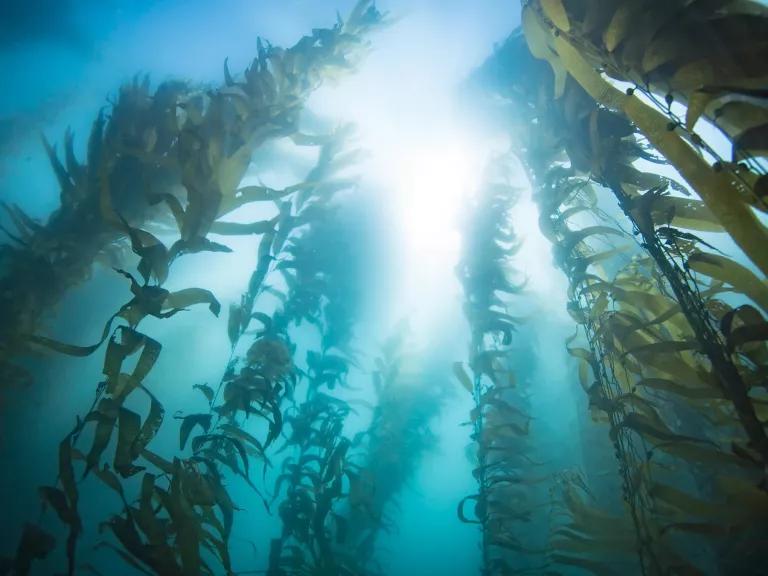
Kelp forests
Camille Pagniello/California Sea Grant via Flickr
Ecosystem engineer
Instead of impacting food supply, beavers, African savanna elephants, and other ecosystem engineers create, modify, or maintain the landscape around them. They influence the prevalence and activities of other organisms and help define the overall biodiversity of their habitat.
Mutualist
Keystone mutualists are two or more species that engage in reciprocally vital interactions. The disruption of one species impacts the other and, ultimately, the ecosystem as a whole. These pairs are often pollinators, like hummingbirds, that rely on specific plants for sustenance, and plants that rely on those pollinators to reproduce.
Plants
Keystone plants, like the Sonoran Desert’s saguaro cactus, are those that provide a critical source of food and/or shelter for other species.
What effect do keystones have on an ecosystem?
Keystone species maintain the local biodiversity of an ecosystem, influencing the abundance and type of other species in a habitat. They are nearly always a critical component of the local food web. One of the defining characteristics of a keystone species is that it fills a critical ecological role that no other species can. Without its keystone species, an entire ecosystem would radically change—or cease to exist altogether. It’s important to note that a species’ role can change from one ecosystem to the next, and a species that is considered a keystone in one environment may not be considered the same in another.
Keystone species examples
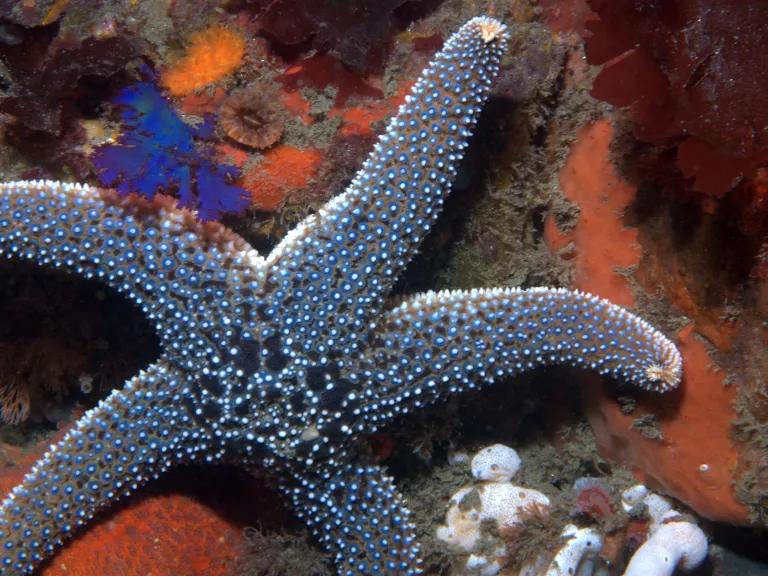
Giant spined star
Ed Bierman via Flickr
Starfish
The sea star, Pisaster ochraceus, is a keystone predator found in the tidal pools of northwestern North America and was the species that launched Robert Paine’s keystone species concept. When comparing two stretches of shoreline—one from which he physically removed the sea stars and hurled them out to sea—Paine observed the huge influence on biodiversity that the starfish had on the landscape where they remained, despite being relatively uncommon. On tidal outcrops lacking the predatory sea star, mussels soon crowded out many of the 15 original species, including algae, limpets, anemones, and sponges. Within a single year, the biodiversity of Paine’s starfish-free ecosystem was nearly halved.
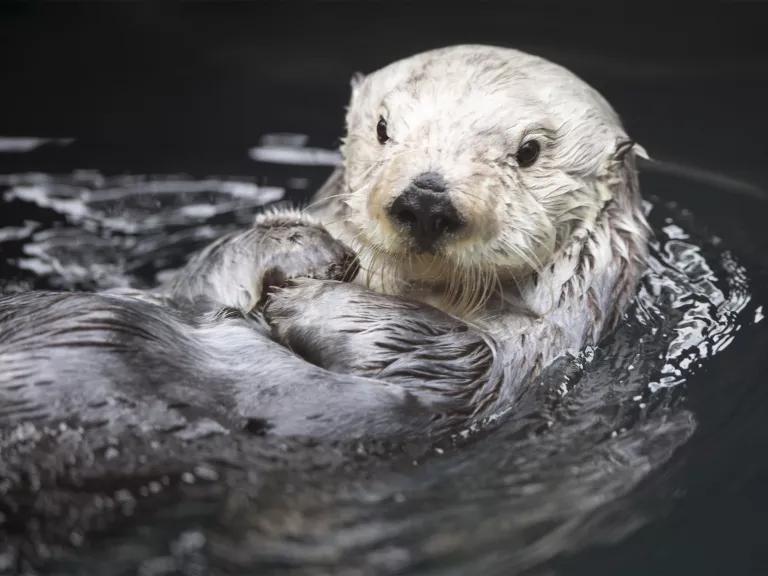
Southern sea otter
Max Rae via Flickr
Sea otters
Native to the northern Pacific Ocean, sea otters play a vital role in the health of coastal kelp forests. Dense ecosystems of brown algae towering above the ocean floor, kelp forests provide food, shelter, nursery habitat, and hunting grounds for an abundance of fish, marine mammals, and other species—but they’re vulnerable to predation by marine invertebrates.
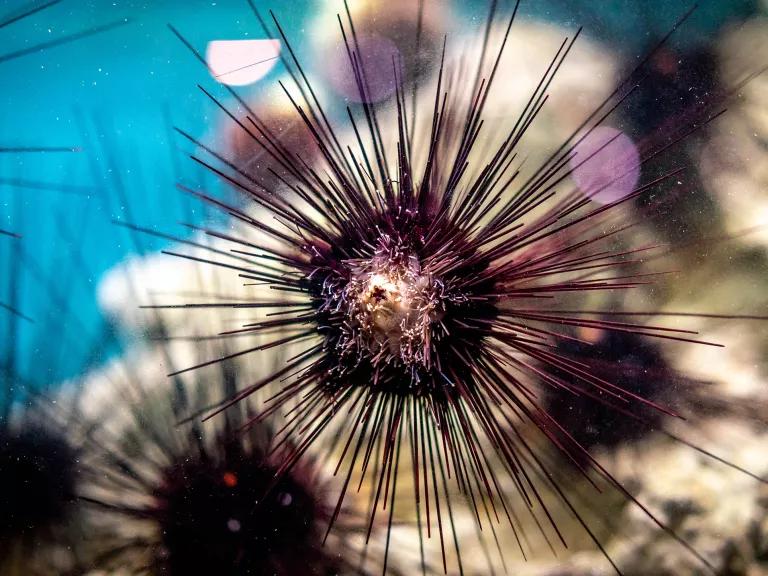
Sea urchin
Benny Ang via Flickr
Sea urchins in particular graze on kelp and, without predators like sea otters to keep them in check, grow larger and more abundant. Whole “herds” of sea urchins have been known to sweep across the ocean floor, gobbling kelp stands at a rate of up to 30 feet per month and leaving barren sea floor in their wake. Fortunately, sea otters are voracious eaters with the ability to consume up to 25 percent of their body weight daily. It’s the otters’ outsize appetite for the spiky marine animals that enables them to control sea urchin populations and keep kelp forests flourishing.
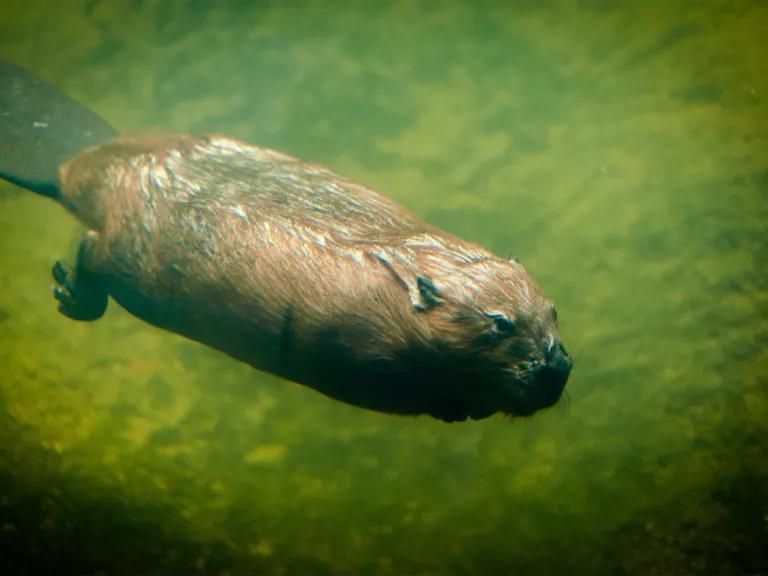
Beaver
Todd Kulesza via Flickr
Beavers
Beavers are ecosystem engineers that dramatically reshape the physical environment around them. The dams they construct flood the surrounding landscape and form a wetland habitat of ponds and marshy meadows that can support a rich concentration of animals and plants. Freshwater fish, insects, amphibians, birds, other animals, and plants, including threatened and endangered ones, rely on wetlands for shelter, nursery habitat, and breeding and feeding grounds. Beaver dams and the wetlands they create also improve water quality in streams, replenish underwater aquifers, alleviate drought and water shortages, reduce flooding, store nutrients for plants, and reduce erosion of stream banks by slowing the flow of water.
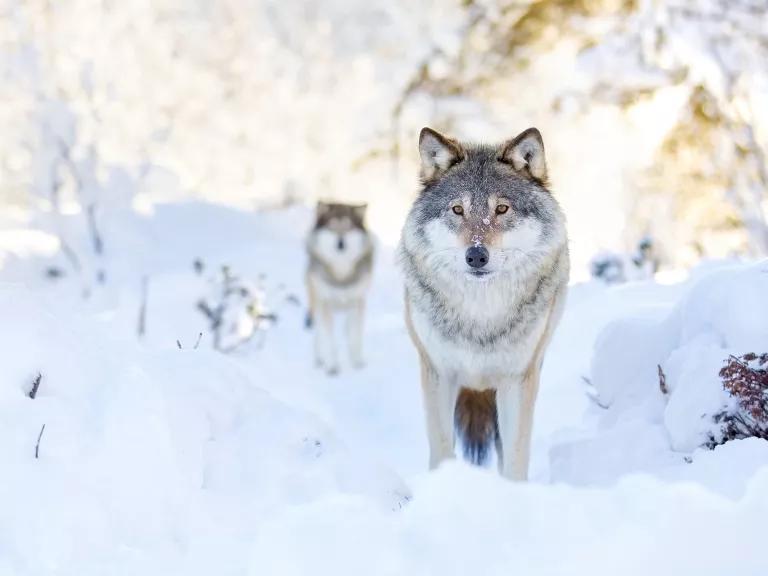
Gray wolves
iStock
Wolves
Gray wolves are a top predator whose presence has a ripple effect on the rest of its ecosystem. Studies show that wolves keep elk populations in check, preventing them from over-browsing on willow and aspen, which in turn helps maintain healthy stands of trees in the landscape. Wolves are a boon to other predator populations as well, with their uneaten food scraps strengthening the food supply of scavengers like eagles, coyotes, and bears.
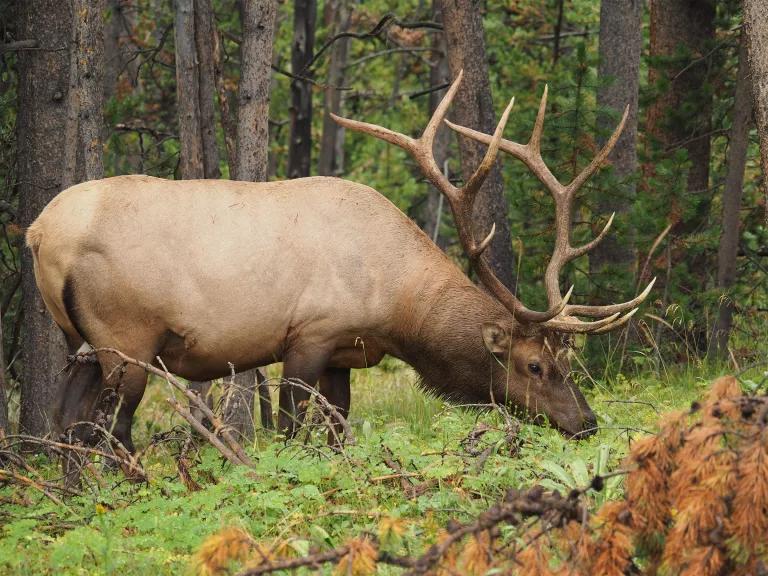
Elk
Matt Burgess via Flickr
The gray wolf inhabits just a fraction of its historical range in the Lower 48 states, and it remains an endangered keystone species. Despite this, the Trump administration is attempting to roll back wolf protections instituted under the Endangered Species Act in 1974—an action that would imperil the animal’s recovery.
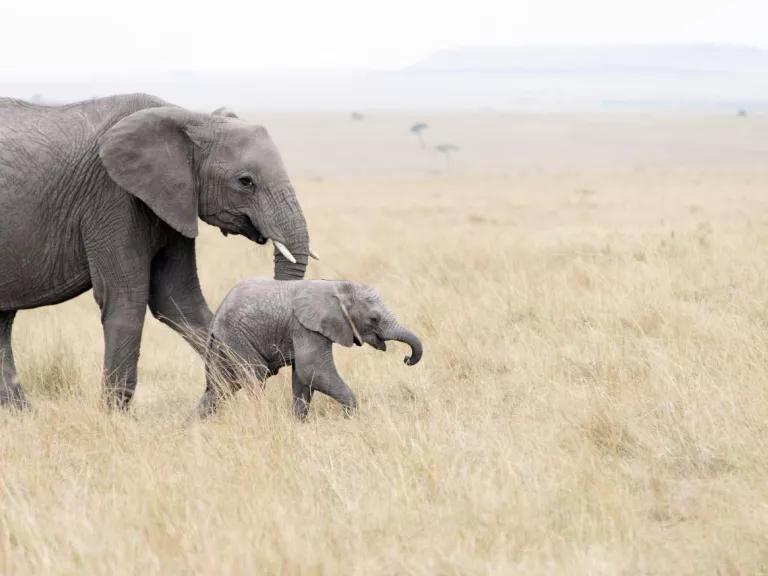
African elephant
Christopher Michel
Elephants
A keystone species in eastern and southern Africa, the African savanna elephant consumes as much as 300 pounds of vegetation per day. By uprooting and eating vast quantities of small trees and shrubs that would otherwise convert to forest or scrubland, they are ecosystem engineers that preserve sunny, open spaces where grasses can thrive. This vegetation supports other herbivores like antelopes, wildebeests, and zebras; it also provides warm, dry soil for smaller animals like mice and shrews to burrow into. In turn, these prey species feed carnivores such as lions, hyenas, and cheetahs. Meanwhile, via their dung, elephants also spread plant seeds to new areas—in fact, some plants have evolved to the point where they germinate more easily after passing through an elephant’s digestive tract. This vital species is under attack from poachers and trophy hunters and at risk of extinction.
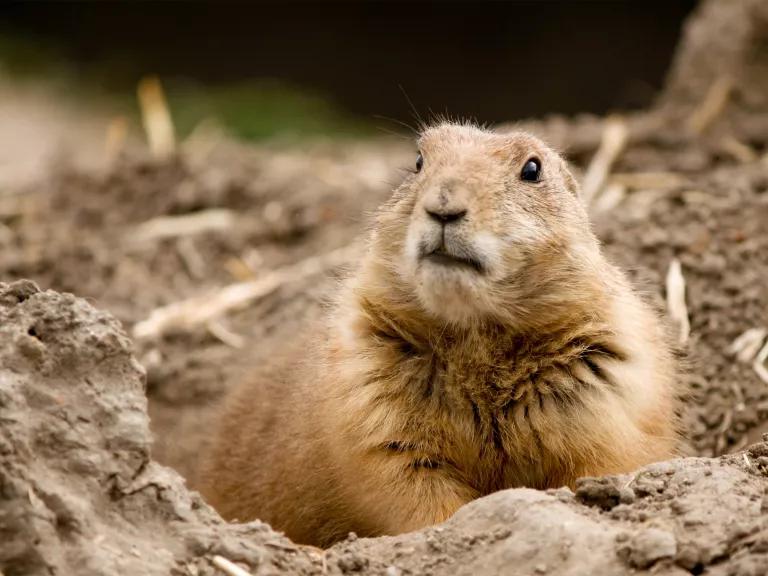
Prairie dog
Renée Hubregtse - Koks via Flickr
Prairie dogs
Residing in the grasslands of central and western North America, prairie dogs are a keystone species that supports some 130-plus other species. In addition to serving as a food source for coyotes, eagles, the endangered black-footed ferret, and other animals, they are ecosystem engineers, maintaining the health of arid grasslands by churning, aerating, and fertilizing soil as they create vast and intricate underground colonies. Their digging allows an array of vegetation to thrive, which in turn supports a greater number of elk, bison, and other grazers. And their burrows provide shelter for animals like rattlesnakes, burrowing owls, and jackrabbits. When prairie dogs disappear from their native grasslands habitat, woody plants can take over, fundamentally altering the prairie ecosystem.
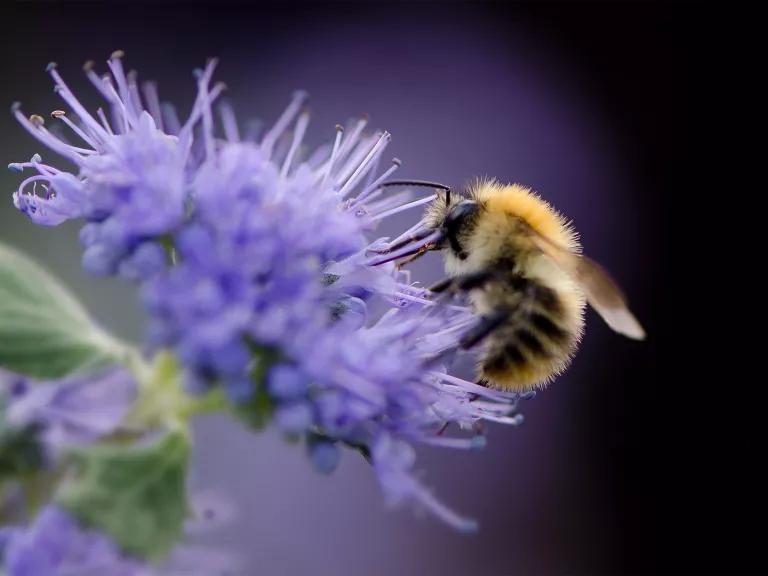
Bumblebee
Jill Catley via Flickr
Bees
With the aid of other pollinators (some of which, like hummingbirds, are also keystone species), bees support the reproduction of as much as 90 percent of the world’s flowering plants. Not only do they pollinate fruits, vegetables, and other crops that provide humans with everything from food to clothing to fuel, but they also help produce the seeds, nuts, berries, and fruit that countless other species in ecosystems around the world survive on. Without bees, there would be a bottom-up cascade of consequences throughout the food chain. Despite this, bees like the endangered rusty patched bumblebee have failed to receive crucial protections in the United States.
Keystone species by region/ecosystem
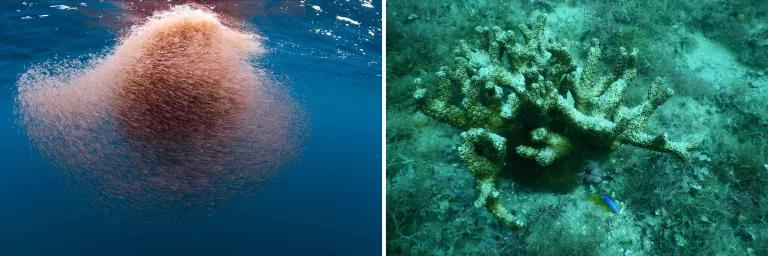
Left: Krill. Right: Robust ivory tree coral
Left: Film Company DisneyNature/A.F. Archive/Alamy. Right: Florida Fish and Wildlife Conservation Commission
Ocean
At the top of the food chain, sharks are keystone predators that have a top-down impact on marine ecosystems worldwide. By preying on the sickest, weakest, and slowest animals, they control the spread of disease and keep prey populations in check. They impact local habitat, too: By hunting predatory fish like grouper in Caribbean reef ecosystems, for example, sharks allow populations of herbivorous fish farther down the food chain to thrive, and these fish, in turn, graze on algae that otherwise degrade coral reef. Some types of corals are considered keystone species as well. One example is ivory tree coral, which is found in the waters off the southeastern United States, the Gulf of Mexico, and the Caribbean and provides valuable habitat for more than 300 invertebrates. Other oceanic keystone species include krill (a vital food source for myriad whales, seals, and seabirds in Antarctica) and mangrove-dwelling crabs (which manage leaf litter and create burrows that improve underwater soil health).
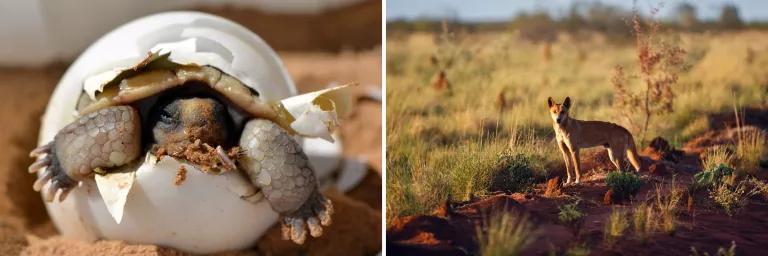
Left: Desert tortoise hatching from its egg. Right: Dingo
From Left: K. Kristina Drake/USGS. Right: Bill Bachman/Alamy
Desert
Native to the Sonoran Desert of the southwestern United States and northwestern Mexico, the saguaro cactus is a keystone species that provides critical nesting spots for birds like red-tailed hawks and woodpeckers (the latter of which peck new nest holes each year, leaving old holes for other birds). These cacti serve as an important source of sustenance, too. Their blooming flowers feed bats, birds, and bees, while their fruit, which ripens when the desert is at its driest, is often the sole wet food source for myriad mammals, insects, and other species.
Other desert keystone species include the desert tortoise of the Mojave (which digs burrows that other animals rely on for protection from predators and the desert heat) and the Australian dingo, which preys on both predators in the middle of the food chain, like invasive red foxes and feral cats, as well as a wide range of herbivores (e.g., kangaroos), helping to keep the Australian outback intact.
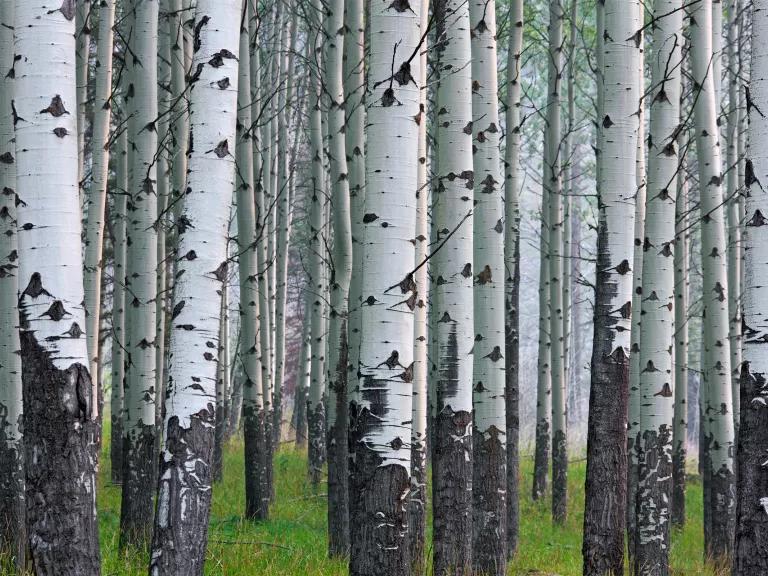
Quaking aspen
Arndt Sven-Erik/Alamy
Boreal forest
Also known as taiga, the boreal forest forms a ring around the majority of the world’s northern latitudes just below the Arctic Circle. In the Canadian boreal, the snowshoe hare is an example of a keystone prey species, serving as food for the threatened Canada lynx (which relies on snowshoe hares for more than 75 percent of its winter diet), and other predators. In the boreal, keystone species also include trees like aspen and willow (these provide critical habitat for myriad organisms like lichens, fungi, insects, and birds) and plants like wild red raspberries, which are a critical food resource for animals from bees to bears.
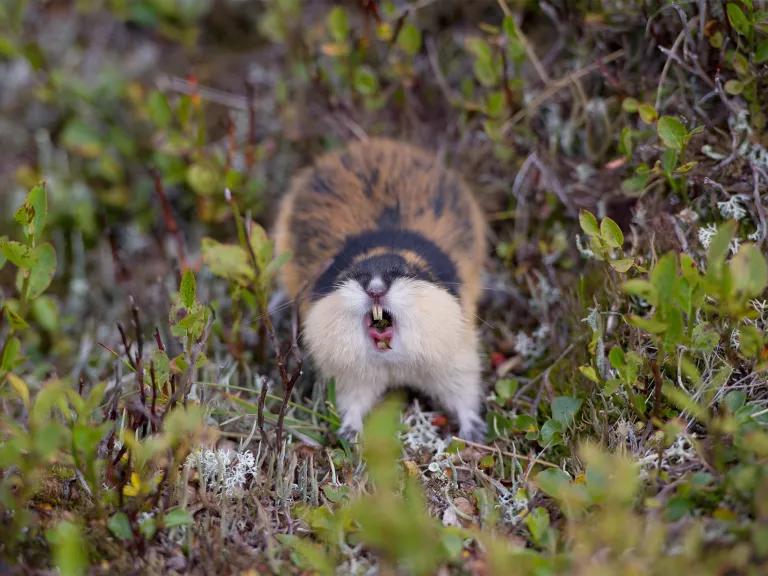
Lemming
iStock
Tundra
Cold, treeless, and typically snowy, the Arctic tundra encompasses the northern part of the Northern Hemisphere and is an ecosystem in which few plant and animal species thrive. One of its most vital prey species is the lemming, a small rodent that undergoes large, cyclic population fluctuations that impact the whole tundra food web. A keystone species, lemmings feed predators like arctic foxes, snowy owls, and weasels; as hungry herbivores, they also impact the prevalence, health, and composition of the vegetation they feed on. Meanwhile, on a series of islands between Norway and the North Pole, dovekies are keystone birds that provide crucial compost for local vegetation while supporting polar bears and arctic foxes as prey.
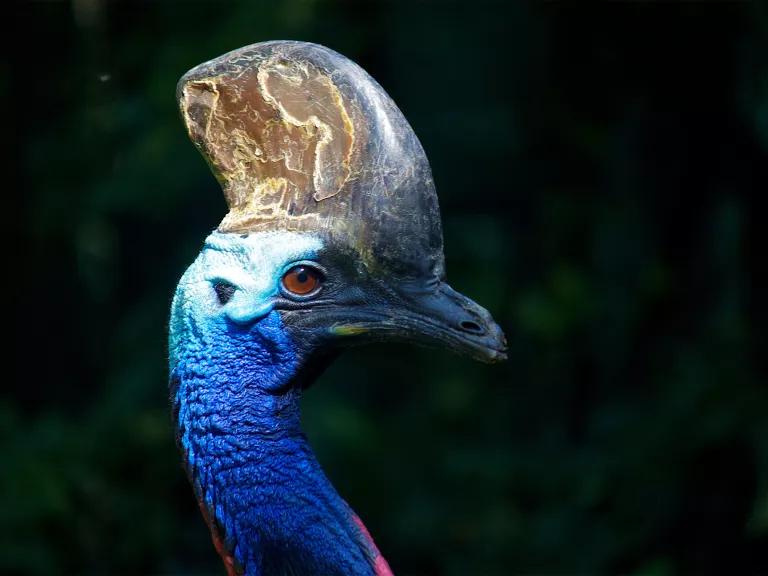
Cassowary
Michelle Bender via Flickr
Tropical rainforest
In tropical forests around the world, fig trees serve as a keystone resource, bearing fruit that feeds more than 1,200 types of birds, bats, and other species year-round (including, critically, times of the year when other food resources are scarce). Some seed dispersers—animals that move through the forest, leaving droppings filled with seeds that can then take root and grow—are also considered keystone species. These include Central Africa’s western lowland gorilla and the southern cassowary of Australia.
This NRDC.org story is available for online republication by news media outlets or nonprofits under these conditions: The writer(s) must be credited with a byline; you must note prominently that the story was originally published by NRDC.org and link to the original; the story cannot be edited (beyond simple things such as grammar); you can’t resell the story in any form or grant republishing rights to other outlets; you can’t republish our material wholesale or automatically—you need to select stories individually; you can’t republish the photos or graphics on our site without specific permission; you should drop us a note to let us know when you’ve used one of our stories.
Biodiversity 101
These 5 Animals Would Be Goners Without the Endangered Species Act
What Are the Effects of Climate Change?
Biodiversity 101
These 5 Animals Would Be Goners Without the Endangered Species Act
What Are the Effects of Climate Change?
Biodiversity 101
These 5 Animals Would Be Goners Without the Endangered Species Act
What Are the Effects of Climate Change?
Biodiversity 101
These 5 Animals Would Be Goners Without the Endangered Species Act